Abstract
Rats trained to lever press for sucrose were exposed to variable-interval schedules in which (i) the probability of reinforcement in each unit of time was a constant, (ii) the probability was high in the first ten seconds after reinforcement and low thereafter, (iii) the probability was low for ten seconds and high thereafter, (iv) the probability increased with time since reinforcement, or (v) the probability was initially zero and then increased with time since reinforcement. All schedules generated similar overall reinforcement rates. A peak in local response rate occurred several seconds after reinforcement under those schedules where reinforcement rate at this time was moderate or high ([i], [ii], and [iv]). Later in the inter-reinforcement interval, local response rate was roughly constant under those schedules with a constant local reinforcement rate ([i], [ii], and [iii]), but increased steadily when local reinforcement rate increased with time since reinforcement ([iv] and [v]). Postreinforcement pauses occurred on all schedules, but were much longer when local reinforcement rate was very low in the ten seconds after reinforcement ([iii]). The interresponse time distribution was highly correlated with the distribution of reinforced interresponse times, and the distribution of postreinforcement pauses was highly correlated with the distribution of reinforced postreinforcement pauses on some schedules. However, there was no direct evidence that these correlations resulted from selective reinforcement of classes of interresponse times and pauses.
Keywords: variable-interval schedules, random-interval schedules, local response rate, local reinforcement rate, postreinforcement pauses, lever press, rats
Full text
PDF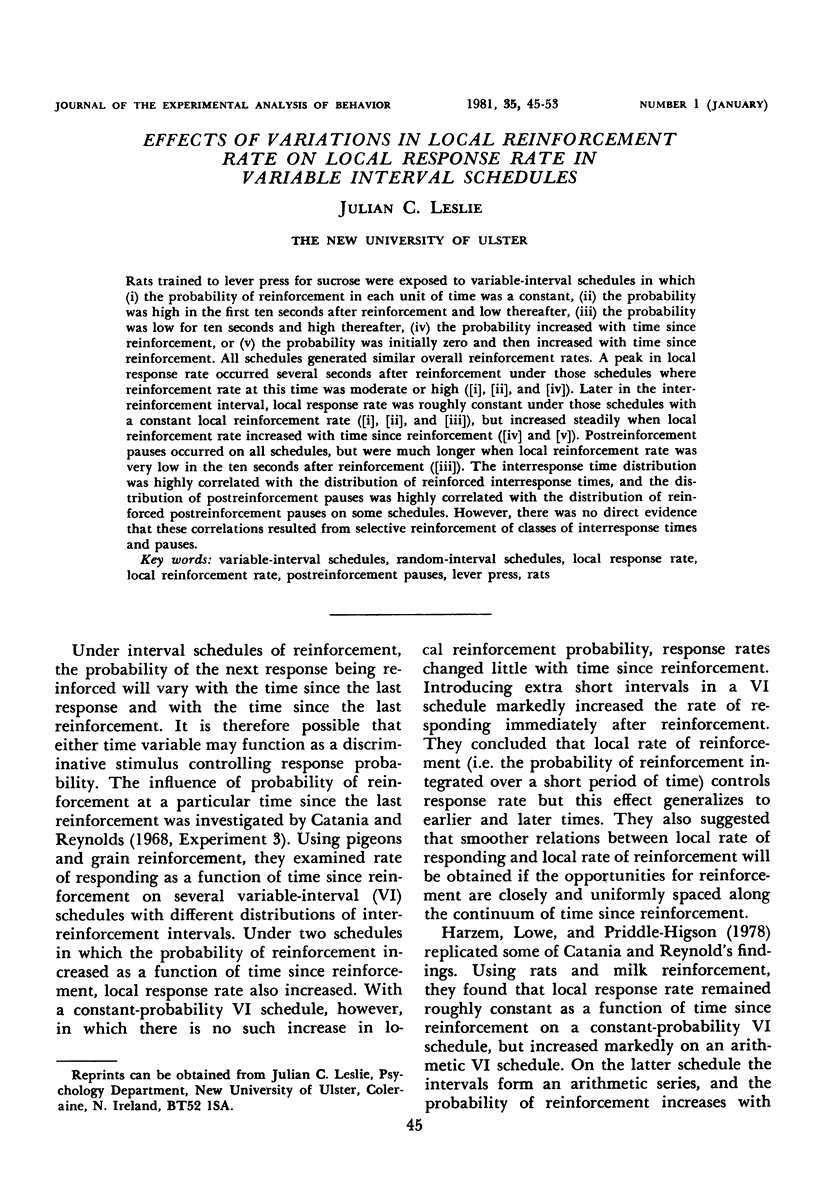
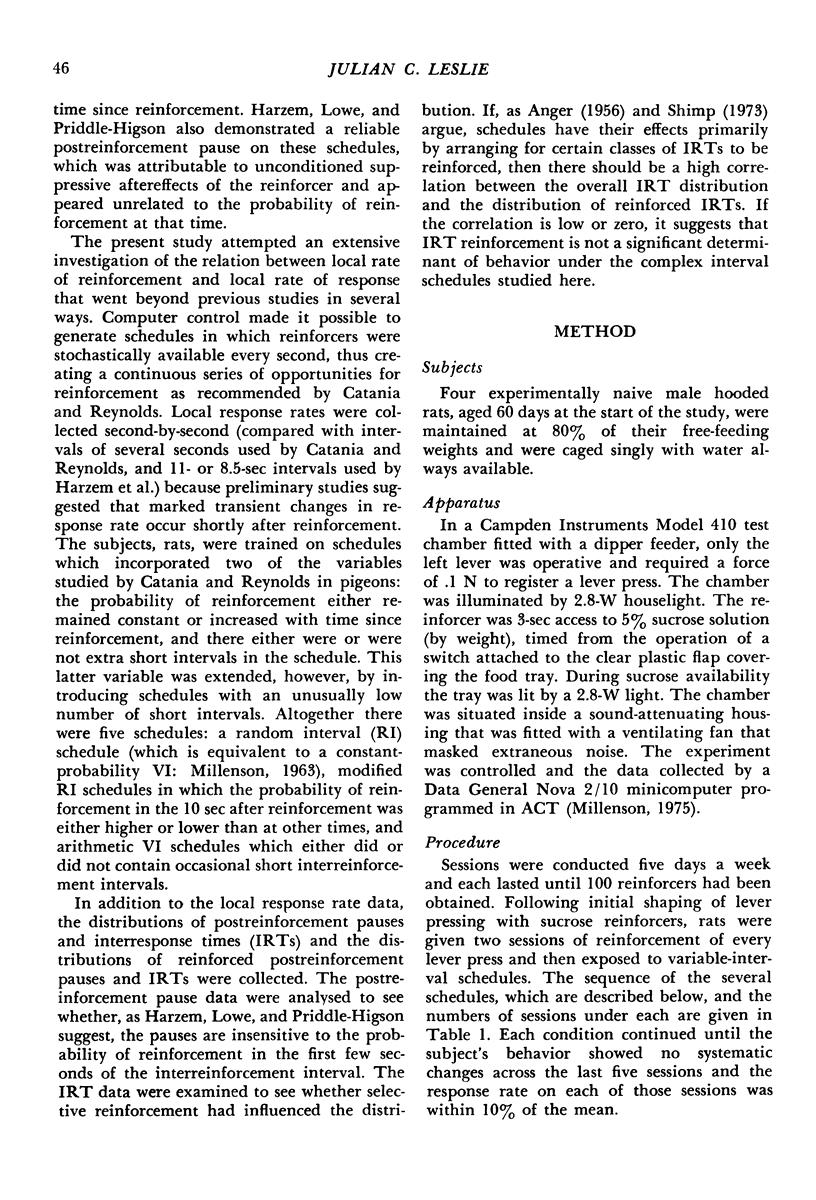
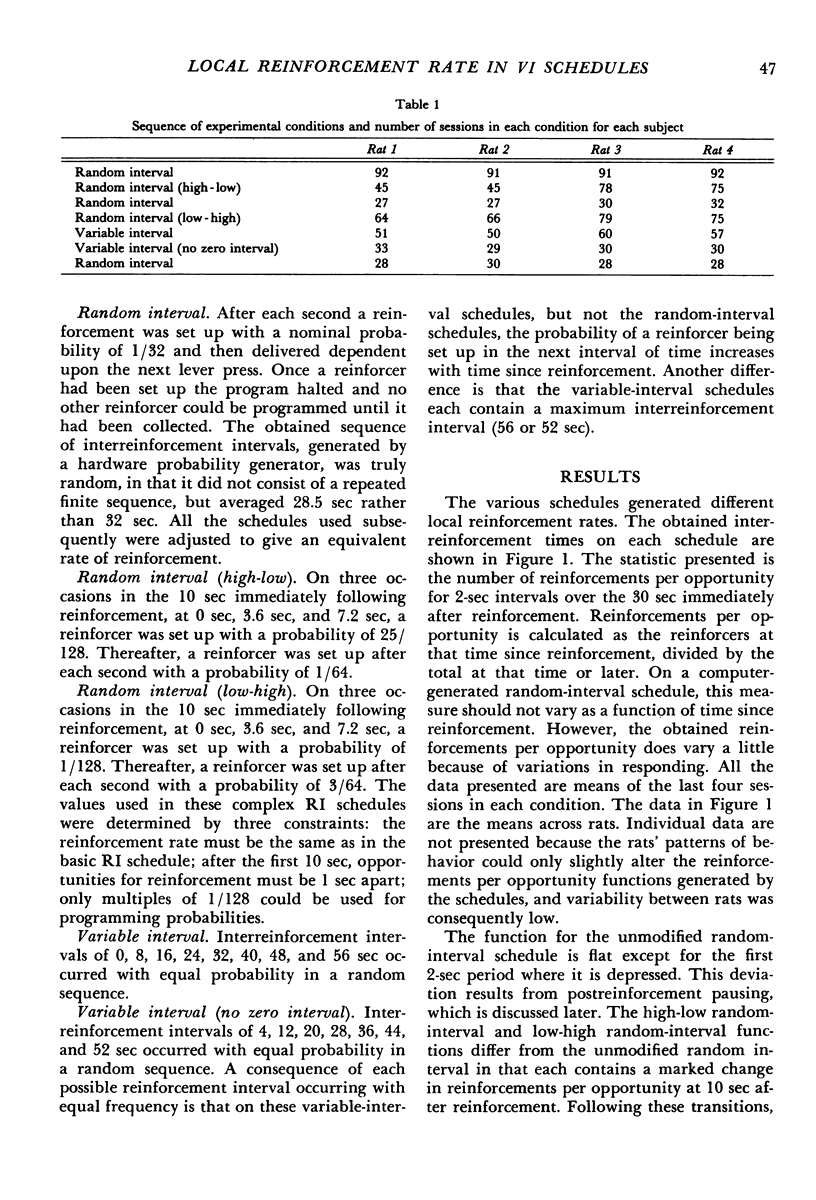

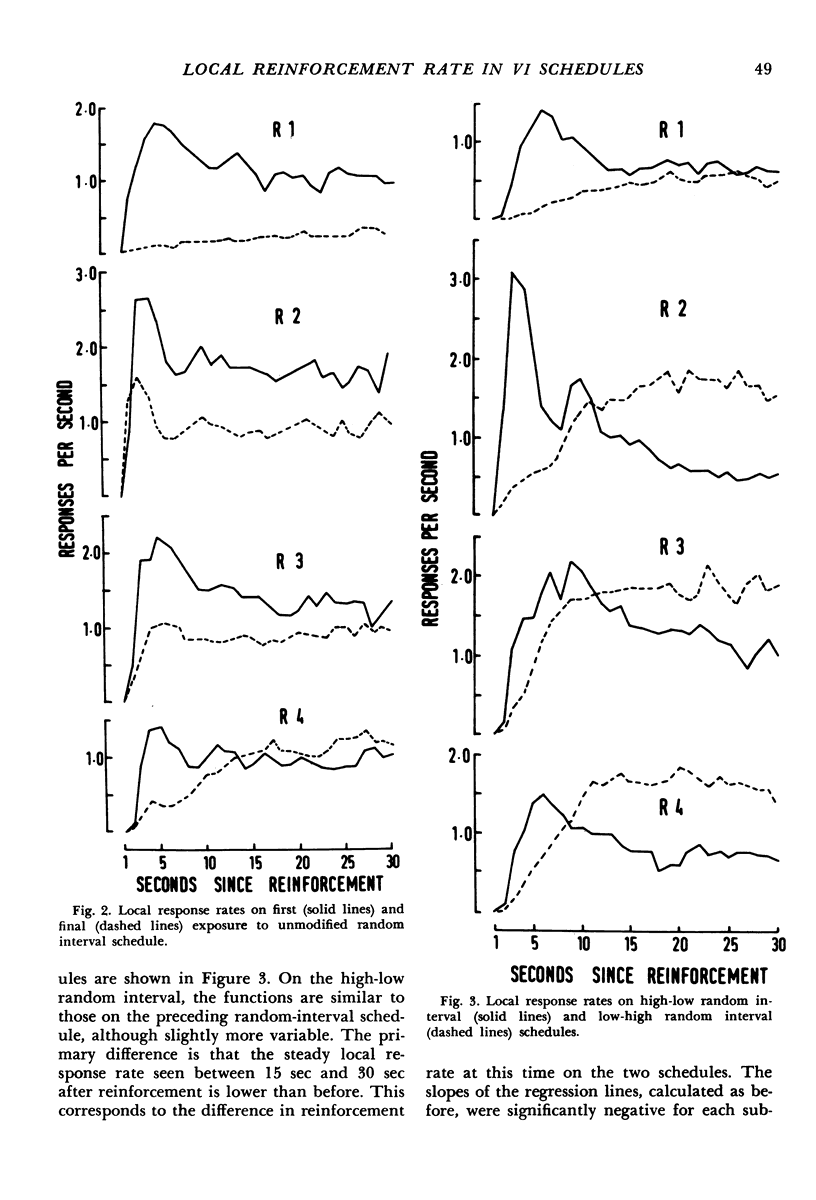
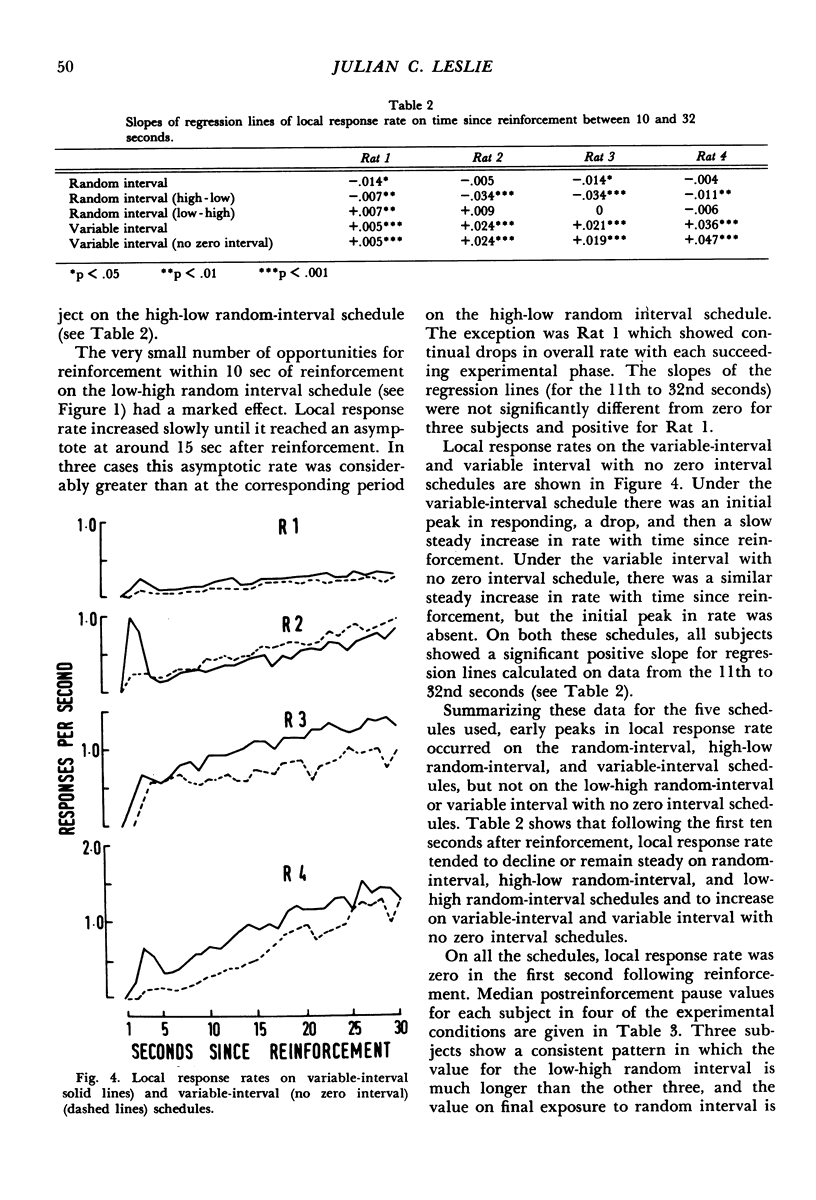
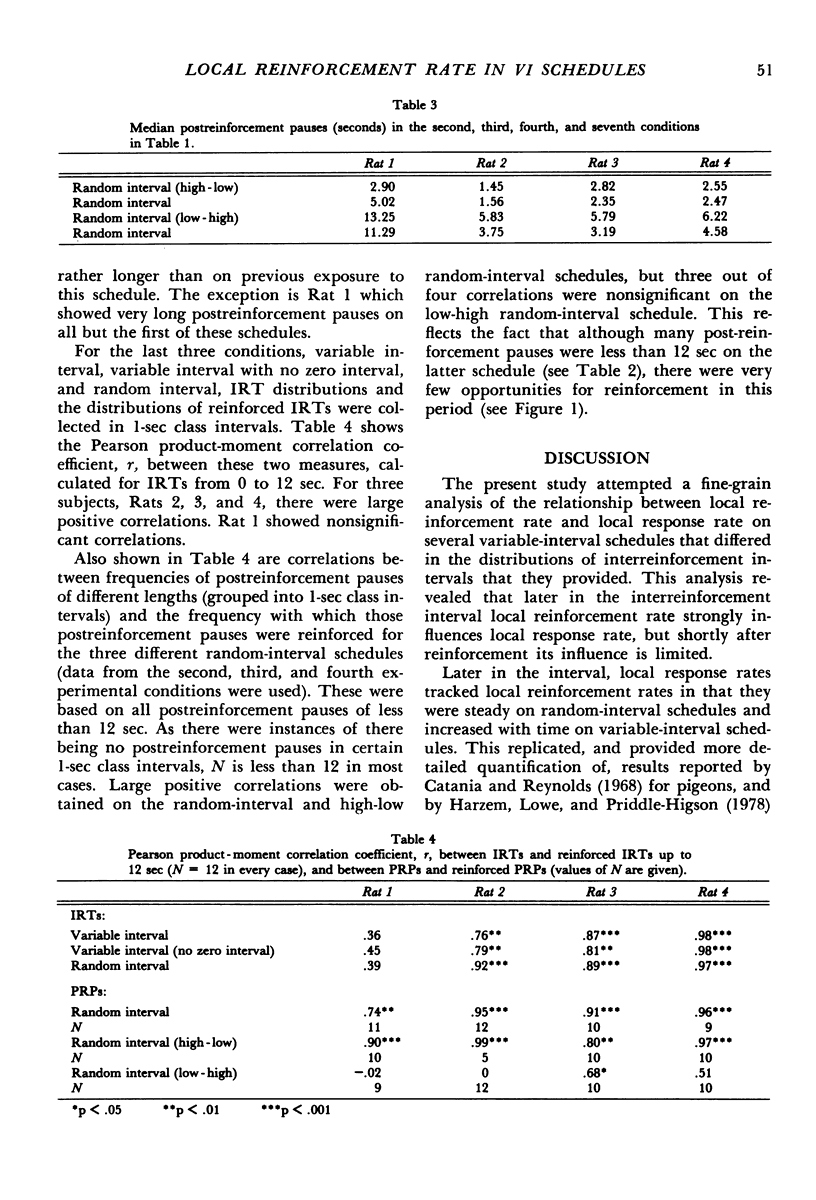
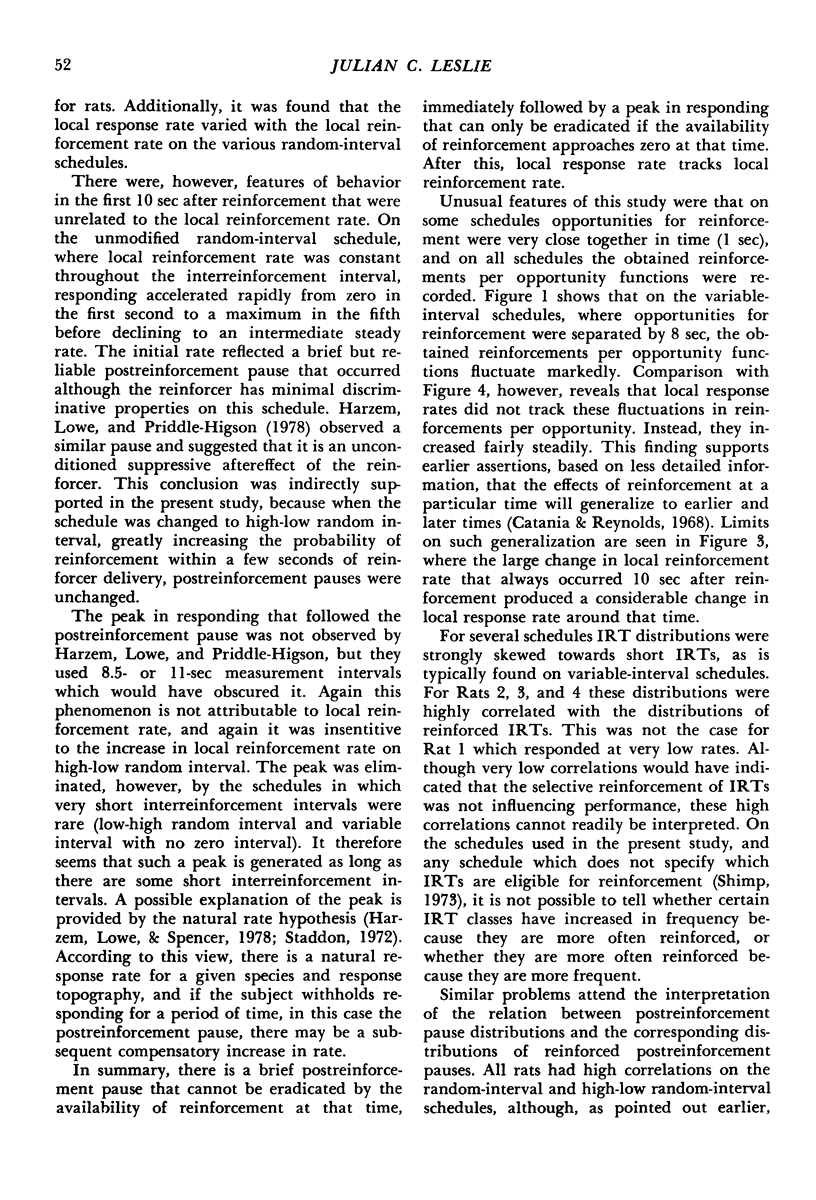
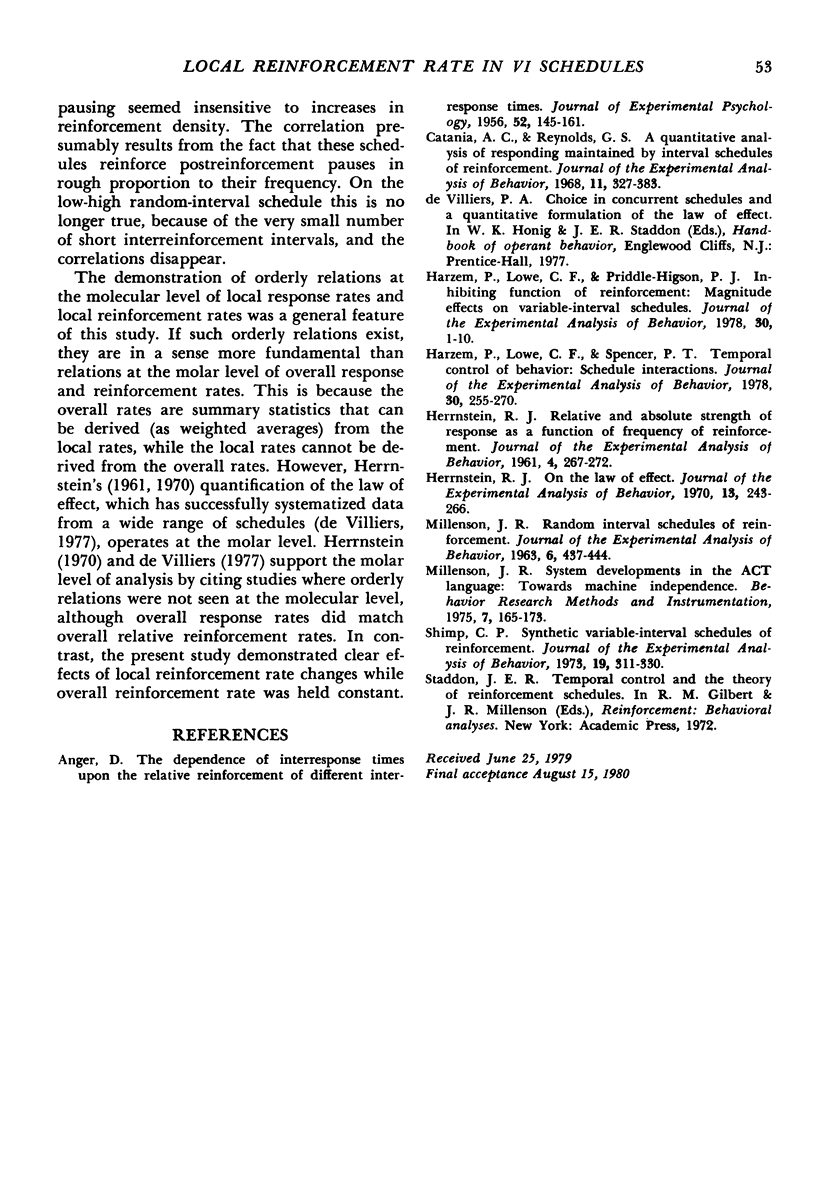
Selected References
These references are in PubMed. This may not be the complete list of references from this article.
- ANGER D. The dependence of interresponse times upon the relative reinforcement of different interresponse times. J Exp Psychol. 1956 Sep;52(3):145–161. doi: 10.1037/h0041255. [DOI] [PubMed] [Google Scholar]
- Catania A. C., Reynolds G. S. A quantitative analysis of the responding maintained by interval schedules of reinforcement. J Exp Anal Behav. 1968 May;11(3 Suppl):327–383. doi: 10.1901/jeab.1968.11-s327. [DOI] [PMC free article] [PubMed] [Google Scholar]
- HERRNSTEIN R. J. Relative and absolute strength of response as a function of frequency of reinforcement. J Exp Anal Behav. 1961 Jul;4:267–272. doi: 10.1901/jeab.1961.4-267. [DOI] [PMC free article] [PubMed] [Google Scholar]
- Harzem P., Lowe C. F., Priddle-Higson P. J. Inhibiting function of reinforcement: magnitude effects on variable-interval schedules. J Exp Anal Behav. 1978 Jul;30(1):1–10. doi: 10.1901/jeab.1978.30-1. [DOI] [PMC free article] [PubMed] [Google Scholar]
- Harzem P., Lowe C. F., Spencer P. T. Temporal control of behavior: schedule interactions. J Exp Anal Behav. 1978 Nov;30(3):255–270. doi: 10.1901/jeab.1978.30-255. [DOI] [PMC free article] [PubMed] [Google Scholar]
- Herrnstein R. J. On the law of effect. J Exp Anal Behav. 1970 Mar;13(2):243–266. doi: 10.1901/jeab.1970.13-243. [DOI] [PMC free article] [PubMed] [Google Scholar]
- Millenson J. R. Random interval schedules of reinforcement. J Exp Anal Behav. 1963 Jul;6(3):437–443. doi: 10.1901/jeab.1963.6-437. [DOI] [PMC free article] [PubMed] [Google Scholar]
- Shimp C. P. Synthetic variable-interval schedules of reinforcement. J Exp Anal Behav. 1973 Mar;19(2):311–330. doi: 10.1901/jeab.1973.19-311. [DOI] [PMC free article] [PubMed] [Google Scholar]


